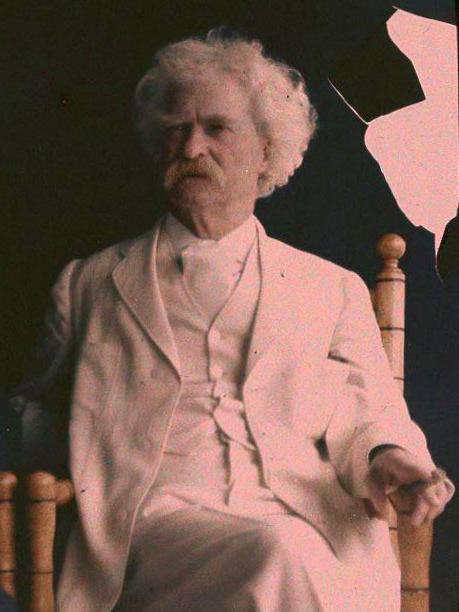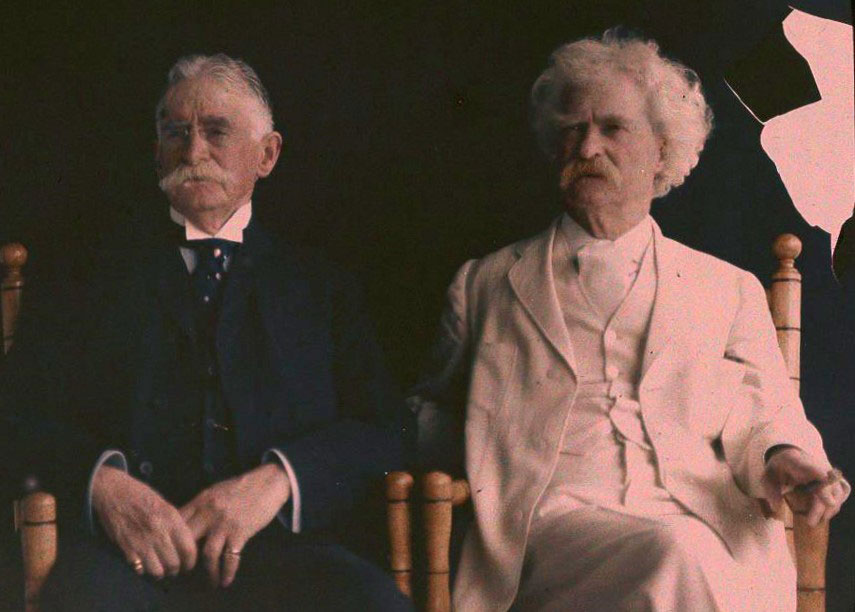

Henry Huttleston Rogers, the Standard-Oil magnate who became one of the most powerful tycoons of his day, was born in 1840. He lived during his childhood and early youth in the house at 39 Middle Street, which still stands today. A member of the first graduating class of Fairhaven High School, Rogers, after completing his secondary school studies, worked as a clerk in a grocery store, then as a baggage master for the Old Colony Railroad, and, at the age of 20, left to seek his fortune in the oil fields of Pennsylvania.
During his lifetime he spent many happy hours in Fairhaven at his elaborate 85-room mansion near Fort Phoenix, and he bestowed on the town such priceless gifts as the magnificent Fairhaven High School; the Town Hall; the beautifully-appointed Millicent Library; the Rogers School; the Unitarian Memorial Church, which is one of the nation’s architectural gems; Masonic Hall, and Cushman Park.
Undoubtedly, one of Rogers’ most famous friends was the great writer, Mark Twain, whom Rogers first met in New York in 1893 at a time when Twain’s unfortunate financial ventures had led him to the verge of bankruptcy. With consummate skill Rogers managed to untangle the gnarled web of Twain’s commercial enterprises, saved the author’s copyrights, and probably also saved Twain’s sanity. Twain expresses his gratitude simply and succinctly in his autobiography, “His wisdom and steadfastness saved my copyrights from being swallowed up in the wreck…and his commercial wisdom has protected my pocketbook ever since.”1
From 1893 on, the two men were on increasingly intimate terms, Twain being a frequent guest at Rogers’ New York home, or aboard Rogers’ yacht, Kanawha, or a familiar visitor to Rogers’ Fairhaven mansion. It was Twain who interested Rogers in furthering the education of Helen Keller at Radcliffe. Moreover, it was Twain who delivered the dedication speech at the opening of Fairhaven Town Hall on February 22, 1894 and also gave a humorous address at the laying of the cornerstone of Unitarian Memorial Church.

The published correspondence between the two men is lively and revealing.2 In many ways Rogers and Twain were kindred spirits – fond of poker, billiards, the theater, practical jokes, mild profanity, the good-natured spoof. Their friendship, in short, was based on a community of interests and on the fact that each, in some way, needed the other.
In the reading room of the Millicent Library is an impressive bronze tablet on which is a remarkable likeness of Mark Twain seated in an armchair and puffing on his curve-stemmed pipe. Below Twain’s representation Tom Sawyer and Huck Finn are depicted. And engraved on the tablet is one of Twain’s favorite aphorisms, “Always do right. This will gratify some people and astonish the rest.”
In February of 1894, after a visit to the library, Twain penned a letter to the Millicent Library Board of Trustees. In the letter he referred to the Millicent Library as "the ideal library." He went on to say, “All other things which I have seen to-day must pass away and be forgotten; but there will still be a Millicent Library when by the mutations of language the books that are in it now will speak in a lost tongue to your posterity.”
-From, “Mark Twain and Fairhaven” Published by the Millicent Library, 1913, 1926, 1976. Edited for website, 2024.
1. Twain, Mark, et al. Autobiography of Mark Twain. Vol. 1, University of California Press, 2010. – Call number: B Twain (MAR) Twain 2010 V.1., p. 192.
2. Twain, Mark, Henry Huttleston Rogers, et al. Mark Twain’s Correspondence with Henry Huttleston Rogers: 1893-1909. University of California Press, 1969. – Call number: B Rogers (HEN) LEA 1969.


